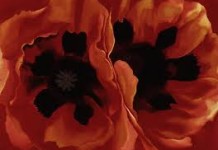Just released: Creativity is getting new attention in today’s America –– along the way revealing fault lines in U.S. culture. Surveys show people overwhelming seeing creativity as both a desirable trait and a work enhancement, yet most say they just aren’t creative.

Like beauty and wealth, creativity seems universally desired but insufficiently possessed. Businesses likewise see innovation as essential to productivity and growth, but can’t bring themselves to risk new ideas. Even as one’s “inner artist” is hyped by a booming self-help industry, creative education dwindles in U.S. schools.
Anxious Creativity: When Imagination Fails examines this conceptual mess, while focusing on how America’s current edginess dampens creativity in everyone. Written in an engaging and accessible style, Anxious Creativity draws on current ideas in the social sciences, economics, and the arts. Discussion centers on the knotty problem of reconciling the expressive potential in all people with the nation’s tendency to reward only a few. Fortunately, there is some good news, as scientists, economists, and creative professionals have begun advocating new ways of sharing and collaboration. Building on these prospects, the book argues that America’s innovation crisis demands a rethinking of individualism, competition, and the ways creativity is rewarded.
Available from all major booksellers. More info at: https://www.routledge.com/Anxious-Creativity-When-Imagination-Fails-1st-Edition/Trend/p/book/9780367275068

